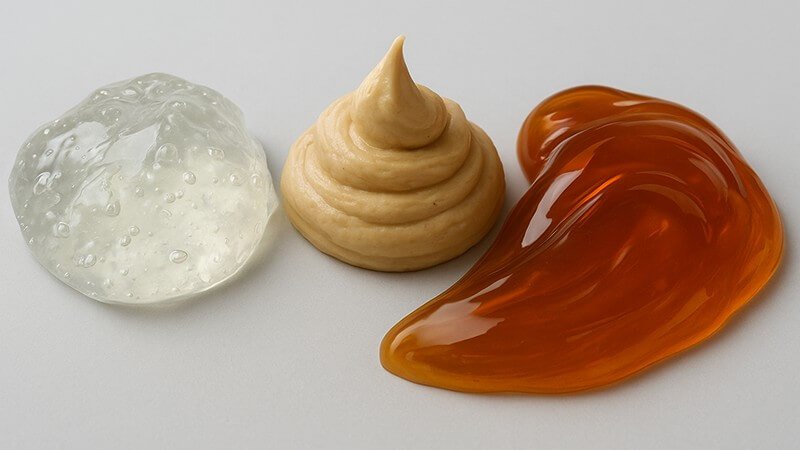Your viscometer gives you a number, but your product still fails. You're missing critical data on how your material behaves under stress, costing you time and money.
A rheometer is a powerful lab instrument used to study the flow and deformation of materials. Unlike a viscometer, it measures complex properties like elasticity and yield stress, providing a much deeper understanding of how a material will behave in the real world.
Understanding what a rheometer does is key to deciding if you need that extra power for your lab. It helps you make the right investment. So, let’s explore what makes a rheometer different and why you might need one.
What Is Rheology and Who Should Study It?
The word "rheology" sounds academic and intimidating. You might ignore it, thinking it is only for scientists. This can lead to missed opportunities and unsolved material problems.
Rheology is simply the science of how things flow and change shape. Anyone involved in formulating, processing, or quality control of materials like polymers, paints, foods, or pharmaceuticals should have a basic understanding of it to ensure product success.
Rheology is not just for university professors. It is a practical science for real-world problems. The word itself comes from Greek, meaning "to flow." It answers questions like: "Will this paint drip down the wall?" or "Will this yogurt feel creamy or watery?" It's the science of texture and movement.
Who Benefits from Rheology?
Many industries rely on rheology for their quality control and product development. If your customers are in these fields, understanding their needs is key. I often talk to distributors like Jacky in Italy who serve clients in these exact areas.
| Industry | Why Rheology is Important |
|---|---|
| Food | To control the texture of yogurt, sauces, and dough. |
| Cosmetics | To ensure lotions and creams have the right feel and stability. |
| Paints & Coatings | To control application properties, prevent sagging, and ensure an even finish. |
| Polymers | To understand how plastics will behave during molding and extrusion. |
| Pharmaceuticals | To formulate ointments and gels that apply correctly and deliver drugs effectively. |
Studying rheology helps you solve your customers' most complex material challenges.
What Is the Difference Between Rheology and Viscosity?
People often use "viscosity" and "rheology" interchangeably. This creates confusion and can lead to misunderstandings in technical discussions, making you seem less informed than you are.
Viscosity is just one piece of the puzzle. It measures a fluid's thickness. Rheology is the entire puzzle itself. It is the broad science that studies viscosity, plus other important properties like elasticity (springiness) and plasticity (permanent deformation).

The best way to think about it is with an analogy. Measuring viscosity is like measuring a person's height. It's a single, important number. Studying rheology is like doing a full physical exam. It gives you height, weight, blood pressure, and a complete picture of health.
More Than Just Thickness
Rheology looks beyond simple flow resistance.
- Viscosity: This is the material's thickness, like honey vs. water. A viscometer, like the ones we make at Martests, is excellent at measuring this.
- Elasticity: This is the "springiness" of a material. Think about stretching a piece of dough. It stretches, but it also wants to pull back. A rheometer can measure this "viscoelastic" behavior, which is crucial for materials like gels and polymers.
- Yield Stress: This is the minimum force needed to make a material start to flow. Ketchup is the classic example. It sits like a solid in the bottle until you shake it hard enough. That initial push required is the yield stress. A rheometer measures this, but most viscometers cannot.
So, rheology provides a much more complete story about your material than viscosity alone.
Why Should I Consider Purchasing a Rheometer Instead of a Viscometer?
Rheometers cost more than viscometers, so it's natural to hesitate. But trying to save money with the wrong instrument can lead to bigger costs from unsolved quality problems later.
Buy a rheometer when you need to understand how and why a material flows, not just how much. If you work with complex materials and need to measure elasticity, yield stress, or behavior under different conditions, a rheometer is the right investment.

As a factory owner who makes viscometers, my goal is for you to have the right tool for the job. Often, that tool is one of my Martests rotational viscometers. They are perfect for routine quality control and for simple fluids. But I am always honest with my clients. If their problem is more complex, they need more power.
Making the Right Choice
Here is a simple guide to help you decide.
| Your Goal | Choose a Viscometer If... | Choose a Rheometer If... |
|---|---|---|
| Routine QC | You are checking if a simple fluid is within a known viscosity range. | Your QC test needs to simulate a complex process (e.g., pumping, spreading). |
| Material Type | You are testing simple, "Newtonian" fluids like oils, solvents, or juices. | You are testing complex, "non-Newtonian" materials like gels, pastes, or polymers. |
| Problem Solving | Your problem is "Is this batch thicker or thinner than the last one?" | Your problem is "Why does this product separate over time?" or "How will it feel to the consumer?" |
| R&D | You are making minor adjustments to an existing, simple formulation. | You are developing a new product with specific texture or flow properties. |
A rheometer is an investment in understanding. A viscometer is an investment in control. Both are valuable, but they serve different purposes.
What Does a Rheometer Measure?
You hear that a rheometer is more powerful, but what does that mean? Without knowing the specific measurements it provides, you cannot justify its cost or use it effectively.
A rheometer measures a material’s complete flow and deformation profile. This includes viscosity at different speeds, "elastic modulus" (stiffness), "viscous modulus" (flowability), yield stress, and how the material recovers its structure after being disturbed.
A viscometer typically gives you one number: viscosity at one speed. A rheometer gives you a whole story, shown in graphs and multiple data points.
Key Rheometer Measurements
Here are the main things a rheometer can tell you that a simple viscometer often cannot:
- Flow Curve: It measures viscosity at many different shear rates (speeds). This tells you if your product gets thinner when you pump it (shear-thinning) or thicker (shear-thickening).
- Yield Stress: It finds the exact amount of force needed to make a "solid-like" material, like toothpaste, start to flow like a liquid.
- Oscillation Test (G' and G''): This is a special test where the rheometer gently pushes the sample back and forth. It measures the material's solid-like part (G', the storage modulus) and its liquid-like part (G'', the loss modulus). This is critical for understanding the structure of gels and pastes.
- Thixotropy/Recovery: It can measure how fast a material thickens back up after being stirred. This is important for paints, inks, and foods that need to set after application.
What Types of Materials Can Be Tested With a Rheometer That a Viscometer May Not Handle Well?
Your viscometer works great for oils, but it struggles with your new gel. The readings are inconsistent, making your quality control process impossible and frustrating for your team.
A rheometer excels with complex materials where a viscometer fails. These are often "viscoelastic" materials that act like both a solid and a liquid, such as thick pastes, gels, polymers, creams, dough, and many adhesives.

A standard rotational viscometer works by shearing a fluid. If the material is too solid-like, the spindle just carves a channel in the sample and spins freely. It's not actually measuring the material's properties anymore. A rheometer uses more sensitive geometries and testing methods to handle these materials.
Materials That Demand a Rheometer
Here are common examples of materials where I'd advise a client to look beyond a viscometer:
| Material Type | Example | Why a Rheometer is Needed |
|---|---|---|
| Soft Solids / Gels | Hair gel, hydrogels | They have a solid structure (elasticity) that a viscometer can't properly measure. |
| Pastes & Suspensions | Toothpaste, peanut butter | They have a high yield stress; they won't flow until you push them hard enough. |
| Polymers | Melted plastic, polymer solutions | Their viscoelastic behavior is critical for processing (e.g., injection molding). |
| Emulsions & Creams | Mayonnaise, cosmetic creams | Their stability and texture depend on the balance of solid and liquid-like properties. |
If you're working with anything that you can pick up or that holds its shape, you likely need a rheometer to get meaningful data.
Conclusion
A rheometer is for deep analysis, measuring viscosity, elasticity, and more. It explains the 'why' behind your material's behavior, making it essential for complex formulation and R&D.


